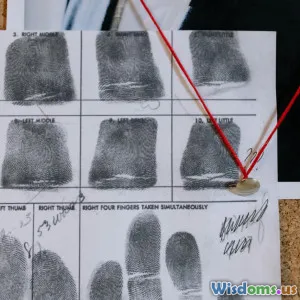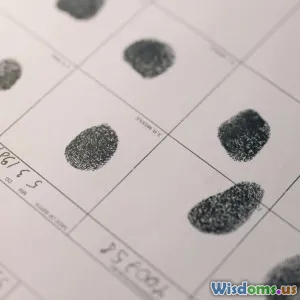
The Role of Technology in Policing
8 min read Explore how cutting-edge technology transforms policing, enhancing crime-solving, community safety, and law enforcement efficiency. (0 Reviews)
The Role of Technology in Policing
Introduction
In an era defined by rapid digital transformation, the realms of policing and law enforcement have undergone profound change. Technology is no longer just an auxiliary tool but a fundamental pillar reshaping how authorities investigate crime, maintain public safety, and build community trust. From the early adoption of rudimentary communication devices to today's sophisticated AI-driven crime analytics and body-worn cameras, technology continues to push the boundaries of what policing can achieve.
Imagine a world where law enforcement officers can predict criminal activity before it occurs or analyze mountains of data within seconds to identify vital crime patterns. Such advancements ignite curiosity and debate alike — how do these tools impact effectiveness, ethics, and civil liberties? This article will delve into the diverse applications of technology in policing, revealing real-world examples, crucial benefits, and ongoing challenges.
The Evolution of Policing Technology
Policing technology has come a long way since the invention of the telephone, two-way radios, and fingerprint databases. The shift can be segmented into several key phases:
Early Innovations
In the early 20th century, advancements such as fingerprint classification systems and rudimentary forensic labs standardized evidence processing. Communication breakthroughs, like radios installed in police vehicles, revolutionized patrol responsiveness.
Digital Databases and Reporting
The late 20th century introduced computerized databases such as the FBI’s Integrated Automated Fingerprint Identification System (IAFIS), allowing faster suspect identification and information sharing between agencies.
The Modern Tech Surge
From the 2000s onward, the surge of mobile technologies, GPS, GIS mapping, AI, and cloud computing completely transformed policing, making data more accessible and actionable.
Key Technologies Shaping Modern Policing
1. Body-Worn Cameras (BWCs) and Surveillance
Perhaps the most visible technological tool is the body-worn camera. These devices empower transparency and accountability, capturing interactions between officers and civilians in real time.
-
Case Study: The Rialto Police Department in California reported a 60% reduction in use-of-force incidents and an 88% decrease in citizen complaints after deploying BWCs citywide between 2012-2013.
-
Benefits: They help deter misconduct, provide critical evidence for investigations, and protect officers from unfounded allegations.
However, BWCs raise privacy concerns that necessitate clear policies regarding data storage, access, and public disclosure.
2. Predictive Policing Using Artificial Intelligence
Predictive policing uses algorithms to analyze vast data sets, including crime reports, social media, and economic indicators, to forecast where crimes are likely to occur next.
-
Example: The Los Angeles Police Department (LAPD) utilizes the PredPol system, which has reportedly helped concentrate patrols in high-risk areas, contributing to a decline in certain crimes.
-
Challenges: Critics argue predictive policing may reinforce biases by targeting historically over-policed neighborhoods and emphasize the need for oversight, transparency, and equity.
3. Forensic Advances and DNA Analysis
Technological advances in forensic science have transformed crime solving, especially with DNA profiling.
-
The advent of Rapid DNA technology enables processing biological samples within hours at crime scenes or in labs, increasing the chances of timely justice.
-
Gene databases such as CODIS (Combined DNA Index System) facilitate linking suspects across jurisdictions.
Example: The capture of the Golden State Killer after decades was possible through genetic genealogy and DNA analysis, marking a revolutionary moment in investigative criminology.
4. Drones and Robotics
Unmanned aerial vehicles (drones) provide critical aerial reconnaissance capabilities in real time, useful for crowd monitoring, search and rescue, and tactical operations.
Robots equipped with cameras or bomb-disposal functionalities reduce risks during high-stakes incidents.
Example: During natural disasters or terrorist threats, police forces deploy drones to assess damage or monitor hostile situations without putting humans in harm’s way.
5. Integrated Communication and Real-Time Data Sharing
Modern police departments utilize comprehensive platforms merging crime databases, GIS mapping, and live data streams.
This integration enhances coordinated responses, rapid suspect tracking, and inter-agency collaboration — all facilitated through mobile devices and smartphones.
Challenges and Considerations
While technology holds vast potential, certain concerns must be addressed:
-
Privacy and Civil Liberties: Surveillance tools may infringe on individual privacy rights. Balancing public safety with constitutional protections remains critical.
-
Bias and Equity: Algorithms may unintentionally deepen systemic inequalities if not carefully designed and audited.
-
Training and Adaptability: Effective use depends on adequate training and resources; officers must learn to trust and utilize tools appropriately.
-
Resistance to Change: Cultural and institutional inertia can slow the adoption of new technologies.
Future Outlook: The Road Ahead
Emerging technologies such as augmented reality (AR) for scene reconstruction, blockchain for evidence tracking, and real-time biometric identification promise to further revolutionize policing.
Sustained ethical debates and community engagement will shape how these tools integrate into daily law enforcement practices.
In conclusion, technological advancement is not a panacea but a critical enabler for effective, transparent, and just policing in the 21st century. When wielded thoughtfully, technology strengthens public trust, enhances safety, and fosters smarter crime-solving strategies.
Conclusion
Technology today is profoundly transforming policing — from body cameras shining a light on officer-civilian interactions to AI algorithms that predict where crimes might occur. These innovations empower law enforcement to act more efficiently and transparently, driving improvements in public safety. Yet, they also demand rigorous attention to civil rights, ethical safeguards, and fairness.
As we navigate this technological frontier, continuous dialogue between communities, technologists, and law enforcement will be paramount. Understanding and embracing technology’s role will enable society to harness its power responsibly — creating safer environments while protecting the freedoms it aims to defend.
Technology is no longer the future of policing; it is the present. The challenge and opportunity lie in shaping its deployment to best serve justice, equity, and public security for all.
Rate the Post
User Reviews
Popular Posts



















